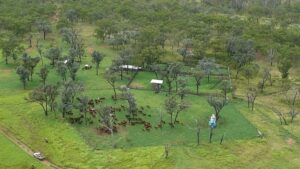It has taken ten years of cheap politics and bad policy decisions to deliver Australians high energy prices, high greenhouse gas emissions and low levels of reliability. Rather than listen to scientists, engineers or economists Australia’s energy policy has been shaped by lobbyists, political strategists and shock jocks. It’s hard to see how things went wrong.
[This article was first published by the Australian Financial Review – here]
The arm-chair engineers in the Australian commentariat haven’t made things easy. Rather than admit that new technology has created room for new solutions, the idea that coal and gas are ‘cheap and reliable’ and renewables are ‘expensive and unreliable’ has been as enduring in our public debate as it is unrelated to the evidence. Take Queensland for example. Queensland has extracted more Coal Seam Gas than every other state and has less wind power than any other state but it’s electricity and gas prices are still among the highest in the country. Whoops. Let’s not talk about that then.
Which brings me to the Finkel Review. In the topsy turvy land of Australian politics we have asked Australia’s Chief Scientist to advise us on electricity market reform, presumably because everyone knows what the economists would say. Professor Finkel has provided a roadmap for energy policy for a political class that is determined to stay off the freeway of carbon pricing in any form and seek instead the scenic backroads of encouraging renewables without discouraging the burning of coal. That said, the scenic route is far quicker than staying put.
In developing his proposed Clean Energy Target (CET) Dr Finkel was forced to steer clear not just of carbon pricing but also the engineering reality that carbon capture and storage (CCS) for coal fired power stations is still nothing more than an expensive, taxpayer funded, experiment. Of course, to admit that is an act of cultural war, so Dr Finkel wisely chose to focus on the fact that if someone did invent cheap and effective CCS it could be included in the definition of clean energy.
The CET, if pursued, would mandate demand for a fixed amount of ‘clean energy’ which in turn will lead to new investment in electricity generation and storage. Professor Finkel leaves the precise definition of ‘clean’ to the politicians but recommends it be measured against a benchmark of greenhouse gas emissions per megawatt of electricity generated. While there will be much debate about this threshold, in reality, the high price of gas and the non-existence of CCS for coal fired power stations means that we are really talking about new targets for wind and solar.
The bigger issue is how much ‘clean energy’ we want. Needless to say, those who own coal fired power stations will argue for ‘not much’ and those who take the science of climate change seriously will argue for ‘lots’. No doubt we will settle for ‘some’ now and ‘more’ later.
But the decision about ambition is not just one for the Federal Government. State governments of both political stripes have mandated their own renewable energy targets which can work in concert with, or be additional to, national policy. Indeed, the ACT is on track to source 100% of its power from renewables by 2020. Given that it was the commonwealth who oversaw the gold plating of the electricity grid, the abolition of carbon pricing and the granting of excessive gas export licenses it is hard to imagine the states will ever again vest sole responsibility for energy policy to the feds.
The Finkel review has given us another useful road map forward. But no review can prevent the coal and gas industry, and its boosters in our parliament, from pretending that we are on the cusp of a new technological breakthrough that will make their fuel cheap and clean. If we don’t take the Chief Scientist’s advice perhaps the next review should be conducted by the Chief Psychiatrist.
Having a road map does not mean one should drive blind, and calls to instantly back Finkel’s scheme without seeing the details of what the government comes up with are as naive as they are reckless. A well-designed CET could be a policy breakthrough, but a badly designed one could lock in over-investment in fossil fuels, increase prices, harm reliability and lead to higher emissions. That’s the exact opposite of solving the trilemna.
Richard Denniss is the chief economist at The Australia Institute @RDNS_TAI
Between the Lines Newsletter
The biggest stories and the best analysis from the team at the Australia Institute, delivered to your inbox every fortnight.
You might also like
Here are 23 Times Carbon Offsets Were Found to be Dodgy
Carbon offsetting has received a lot of attention recently. As businesses and governments look to meet their climate targets, many are turning to carbon offsets. That is, they are paying someone else to reduce or avoid putting greenhouse gases into the atmosphere, so they don’t have to.
The carbon con killing koalas
The NSW Labor Government took office promising to create a vast koala sanctuary on the state’s mid-north coast – the Great Koala National Park. Despite the threat of koala extinction in the state, more than a year later the Great Koala National Park is yet to be established.
Australia’s Climate of Discontent
Australia gives more aid to foreign fossil fuel companies than it does to our neighbours in the Pacific.


